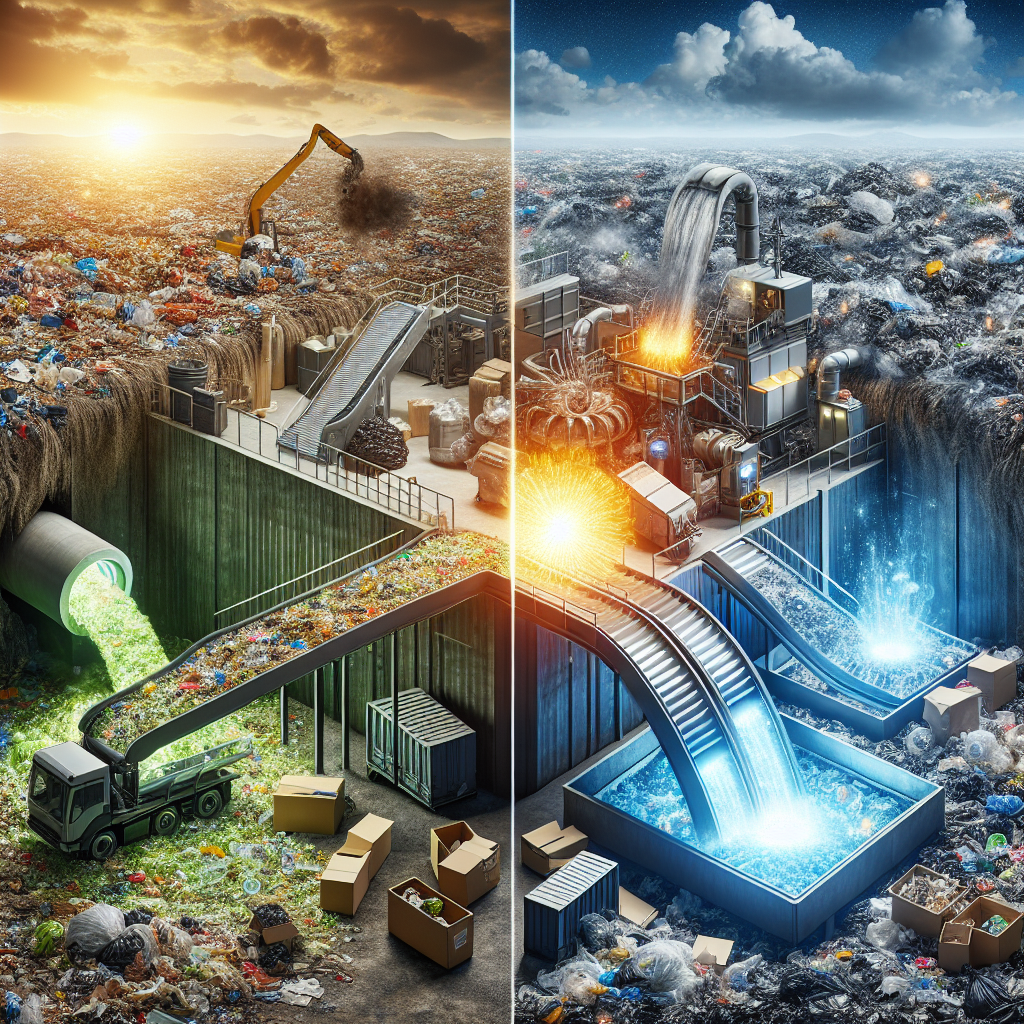Bioenergy from Waste: Turning Trash into Treasure
In the contemporary quest for sustainable energy solutions, a remarkable transformation is taking place—one that turns our everyday waste into a valuable resource. Bioenergy from waste, a process that converts organic waste materials into energy, is emerging as a key player in the green energy landscape. This innovative approach not only offers a solution to managing waste but also contributes to reducing reliance on fossil fuels, thus mitigating climate change impacts.
The Science Behind Bioenergy from Waste
Bioenergy is derived from biomass, which is organic material coming from plants and animals. Waste-to-energy (WTE) technologies tap into the energy stored in waste materials, converting them into electricity, heat, or fuel through various processes including combustion, gasification, pyrolysis, anaerobic digestion, and fermentation.
One common method, anaerobic digestion, involves the breakdown of organic waste by bacteria in an oxygen-free environment, producing biogas. This biogas, primarily composed of methane and carbon dioxide, can be used to generate electricity or heat, or upgraded to biomethane, a renewable natural gas. Another method, gasification, transforms organic or fossil fuel-based carbonaceous materials into carbon monoxide, hydrogen, and carbon dioxide. This gas mixture can be used to generate electricity or as a basic chemical feedstock for a range of uses.
The Environmental and Economic Benefits
The environmental benefits of bioenergy from waste are substantial. By diverting waste from landfills, it reduces methane emissions—a potent greenhouse gas. It also decreases the volume of waste, conserves natural resources by substituting fossil fuels with renewable energy, and can help reduce the pollution of water and soil.
Economically, bioenergy projects create jobs in rural and urban areas, providing a boost to local economies. They can also offer a more stable and potentially cheaper energy supply, reducing dependence on imported fuels. Furthermore, the use of waste as a resource encourages the development of a circular economy, where waste materials are reused, recycled, and recovered, thus adding value and reducing environmental impact.
Challenges and Considerations
Despite its benefits, the implementation of bioenergy from waste faces several challenges. The initial capital cost for setting up bioenergy plants can be high, and the technology requires ongoing investment in research and development to improve efficiency and reduce costs. There are also concerns about air quality and emissions, though these can be mitigated with modern technology and strict regulatory standards.
Public perception and acceptance can be another hurdle, as communities may have concerns about potential smells, pollution, and the transportation of waste. Engaging communities early in the planning process and demonstrating the benefits of bioenergy facilities can help overcome these challenges.
Global Trends and Future Outlook
Globally, the bioenergy from waste sector is seeing significant growth, driven by policies aimed at reducing greenhouse gas emissions, improving waste management, and increasing the use of renewable energy. Countries across Europe, North America, and Asia are investing in bioenergy technologies, recognizing their potential to contribute to environmental sustainability and energy security.
As technology advances and economies of scale improve, bioenergy from waste is set to become an increasingly cost-effective and environmentally friendly energy option. Innovations, such as the development of more efficient conversion technologies and the integration of bioenergy plants with existing waste management systems, will further enhance its appeal and applicability.
FAQs
Q: Is bioenergy from waste renewable?
A: Yes, bioenergy is considered a renewable energy source because it is derived from biomass materials, such as plant and animal waste, which can be continually replenished.
Q: How efficient is bioenergy from waste?
A: The efficiency of bioenergy from waste processes varies depending on the technology used. Anaerobic digestion and gasification are among the more efficient methods, with ongoing research aimed at improving their yield and reducing costs.
Q: Can all types of waste be used for bioenergy?
A: While many organic wastes are suitable for bioenergy production, not all waste types are viable. Materials that are toxic, contain heavy metals, or are otherwise hazardous may not be appropriate. Each bioenergy technology has specific requirements for the type of waste it can process.
Q: Does bioenergy from waste compete with recycling?
A: Ideally, bioenergy from waste and recycling should complement each other within a circular economy framework. Bioenergy is best suited for organic waste that cannot be recycled, while recycling should be prioritized for materials that can be reused or repurposed.
Q: What are the main products of bioenergy from waste?
A: The main products include electricity, heat, biogas (which can be upgraded to biomethane), and biofuels. The specific output depends on the conversion process and the input material.
In conclusion, bioenergy from waste represents a promising solution to both waste management and renewable energy challenges, offering a sustainable pathway to turn trash into treasure. As technology evolves and awareness grows, it has the potential to play a pivotal role in the global transition to a more sustainable and circular economy.

